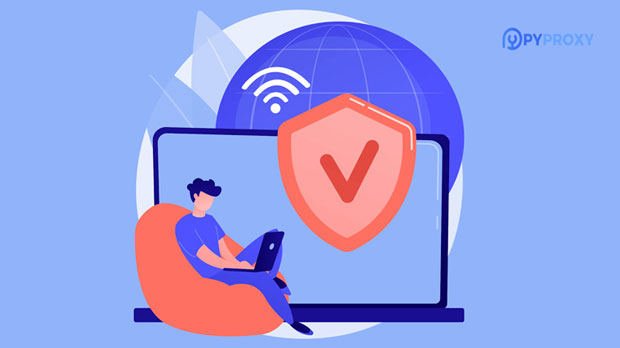List of popular Socks5 configurator software on the market
socks5 proxy configuration software is essential for individuals and organizations seeking to optimize their online security, privacy, and internet speed. This software allows users to set up and manage socks5 proxies, which route internet traffic securely and anonymously. The increasing demand for online privacy, bypassing geographic restrictions, and ensuring fast, seamless connectivity has led to the development of various configuration tools. In this article, we will explore some of the most popular SOCKS5 configuration software options on the market, offering a deep dive into their features, usability, and suitability for different user needs. Understanding the capabilities of these tools can help users make informed decisions in selecting the right one for their specific requirements. What is SOCKS5 and Why Use SOCKS5 Configuration Software?Before diving into the different configuration software, it's important to understand what SOCKS5 is and why it plays such a crucial role in modern online activities. SOCKS5 is a versatile internet protocol that routes data packets between a client and server via a proxy server. Unlike its predecessors, SOCKS4 and SOCKS3, SOCKS5 supports a wider range of protocols and offers enhanced security features, such as authentication, encryption, and support for UDP packets.One of the main reasons users opt for SOCKS5 proxies is privacy. By masking the user's IP address, SOCKS5 proxies enable secure browsing, making it harder for websites to track personal information. They are also widely used to bypass geographic restrictions on content, ensuring unrestricted access to websites and streaming platforms globally. This makes SOCKS5 configuration software an essential tool for anyone looking to enhance their digital security and maintain online anonymity.Features to Look for in SOCKS5 Configuration SoftwareWhen choosing SOCKS5 configuration software, several key features can make a big difference in the performance, usability, and overall experience. These features are designed to cater to different user needs, ranging from individuals seeking simple solutions to businesses requiring advanced configurations.1. User-Friendly InterfaceA clean and intuitive user interface is vital for both novice and advanced users. For beginners, easy-to-navigate software helps avoid frustration and ensures a smooth setup process. Features like quick-connect buttons, step-by-step setup guides, and clear connection status indicators can enhance the user experience. Advanced users, on the other hand, may prefer more customizable configurations, allowing them to adjust proxy settings, encryption protocols, and data routing as needed.2. Security and EncryptionSince SOCKS5 is often used for enhanced security, it’s crucial that configuration software supports strong encryption options. Some software offers additional security features, such as SSL/TLS encryption, which protects sensitive data from being intercepted. When considering a SOCKS5 configuration tool, ensure that it allows for secure tunneling, minimizes data leaks, and provides options to enable authentication protocols that further safeguard connections.3. Speed and PerformanceIn a world where internet speed is a priority for many users, SOCKS5 configuration software should help maintain high-speed connections. The best software optimizes the proxy server's connection, ensuring low latency and fast data transfer. This is particularly important for users engaging in activities like video streaming, gaming, or large file downloads. Look for software that offers features such as connection speed testing, optimized routing, and support for high-bandwidth protocols.4. Compatibility with Multiple PlatformsSOCKS5 configuration software should be compatible with a wide range of devices and operating systems, including Windows, macOS, Linux, and mobile platforms like iOS and Android. A cross-platform tool ensures that users can secure their internet traffic across various devices without hassle. Furthermore, many users prefer having the option to configure their proxies on routers, enabling all connected devices in their home or office network to benefit from the proxy.5. Proxy Rotation and Load BalancingFor users who require enhanced privacy or need to manage a large volume of internet traffic, features such as proxy rotation and load balancing are invaluable. Proxy rotation helps change the IP address periodically, reducing the risk of detection by websites. Load balancing, on the other hand, distributes the internet traffic across multiple proxy servers, preventing any single server from becoming overloaded and ensuring uninterrupted access.Popular SOCKS5 Configuration Software OptionsThere are numerous SOCKS5 configuration software options available, each catering to specific needs and preferences. Below is an overview of the features offered by some of the most widely used tools.1. Software with One-Click SetupFor users seeking a simple solution, software that offers one-click setup is a great choice. These tools prioritize ease of use, allowing users to configure their SOCKS5 proxy in just a few steps. The setup process is typically guided by prompts, with minimal customization required. This type of software is ideal for users who are new to SOCKS5 proxies and are looking for a straightforward, no-fuss experience.2. Advanced Configuration Tools for ProfessionalsOn the other end of the spectrum, advanced configuration software caters to professionals who need fine-tuned control over their SOCKS5 proxy settings. These tools offer a range of features, such as customizable encryption protocols, detailed traffic analysis, and multiple proxy support. Users can configure each proxy's behavior based on specific needs, whether it’s for increased anonymity or optimized performance. This type of software is often favored by businesses, marketers, or individuals working in cybersecurity.3. Open-Source Configuration SoftwareOpen-source SOCKS5 configuration software offers transparency, customization, and flexibility for tech-savvy users. With open-source tools, users have access to the software's underlying code, enabling them to modify or expand features according to their specific needs. This type of software often benefits users who require custom solutions and want to have full control over their proxy configurations without relying on commercial solutions.Conclusion: Selecting the Right SOCKS5 Configuration SoftwareWhen selecting SOCKS5 configuration software, it's important to consider the features that align with your specific needs. Whether you are looking for a simple, user-friendly tool for personal use or a robust, customizable solution for business operations, there is a wide array of software available on the market. Prioritize factors such as ease of use, security, speed, compatibility, and customization options to ensure that the software you choose is the best fit for your objectives.By understanding the key features and the varying capabilities of these tools, users can make informed decisions and select a SOCKS5 configuration software that enhances their online security, privacy, and performance, while providing the flexibility they need.
2025-01-14
























































